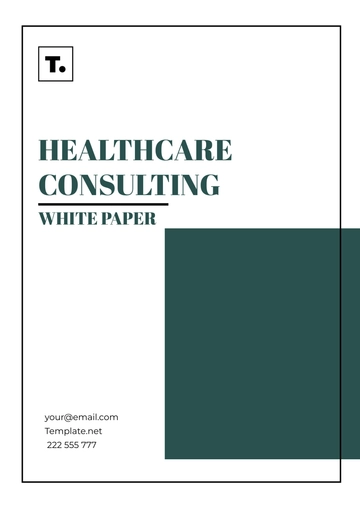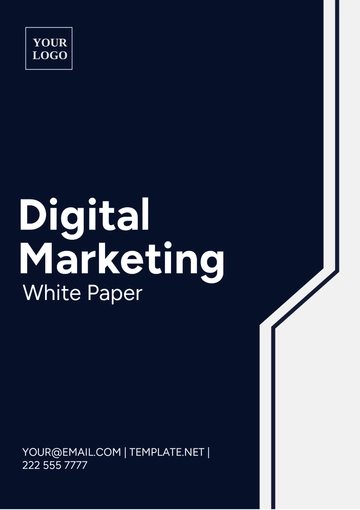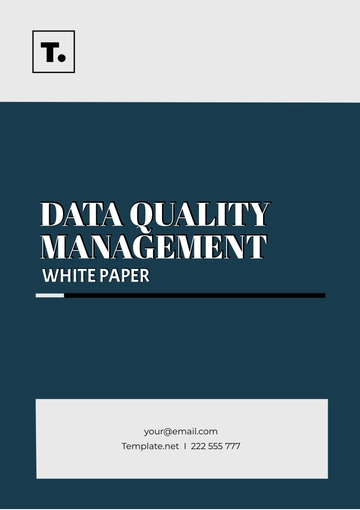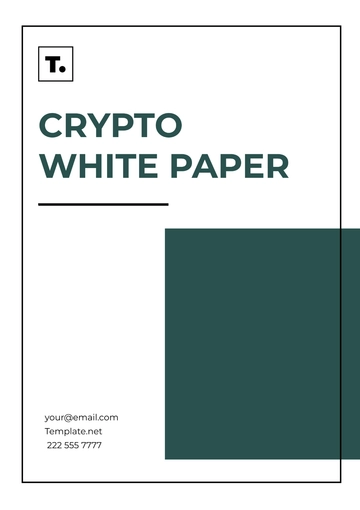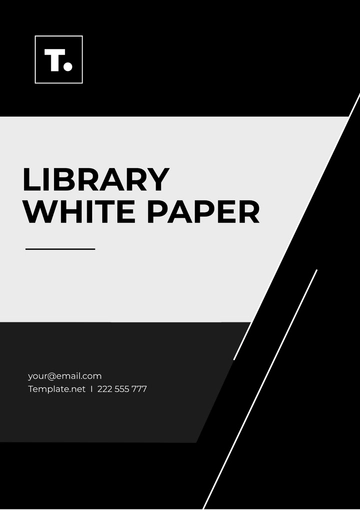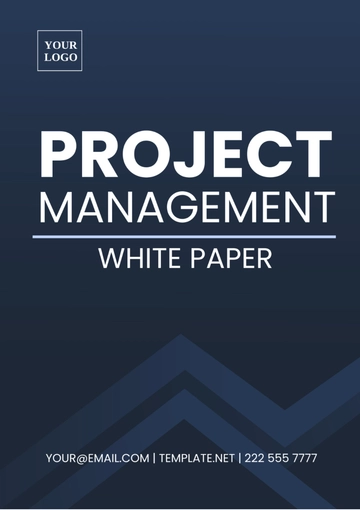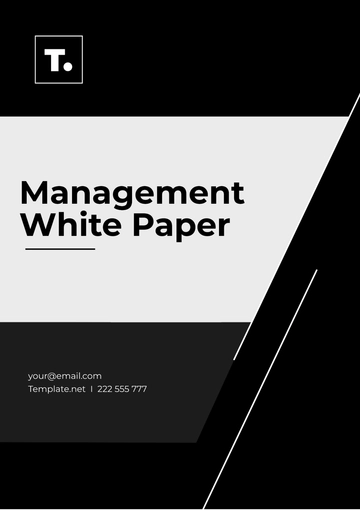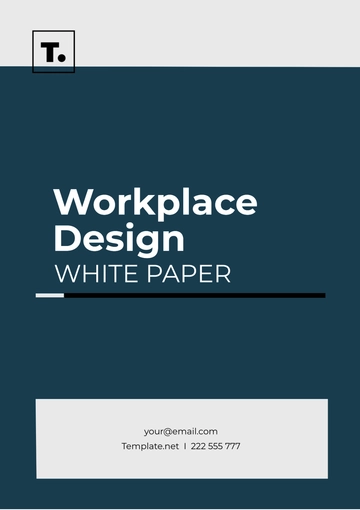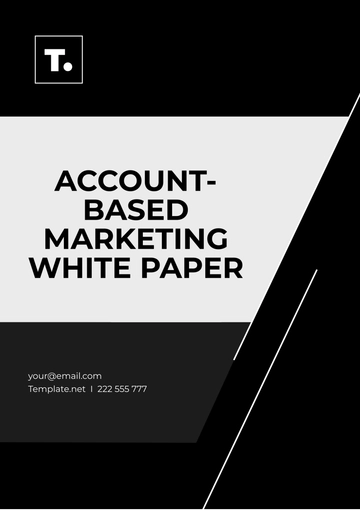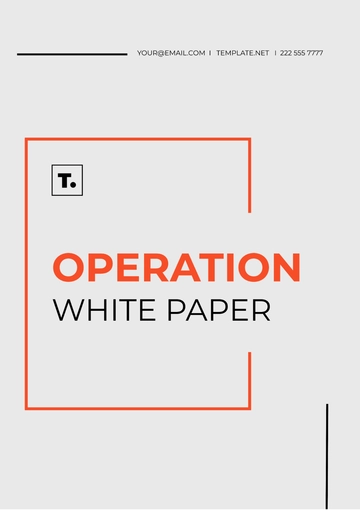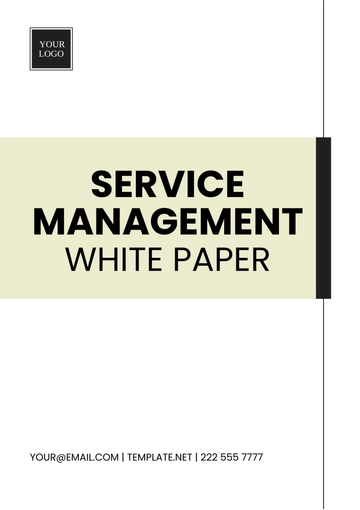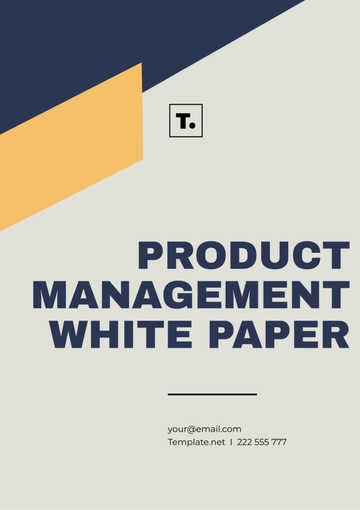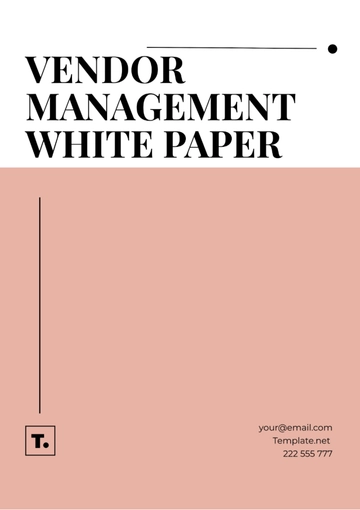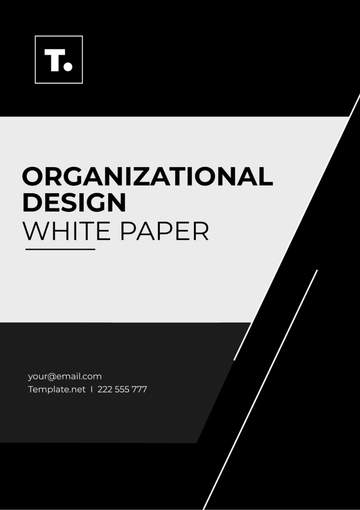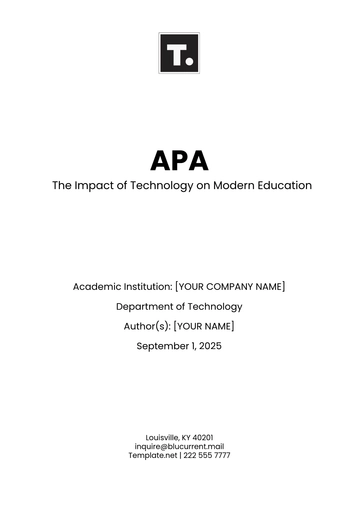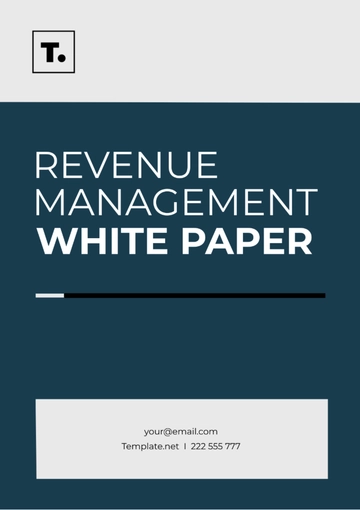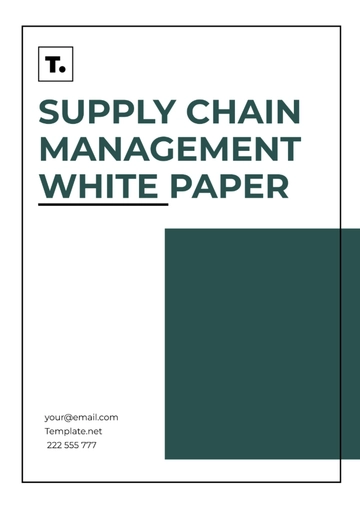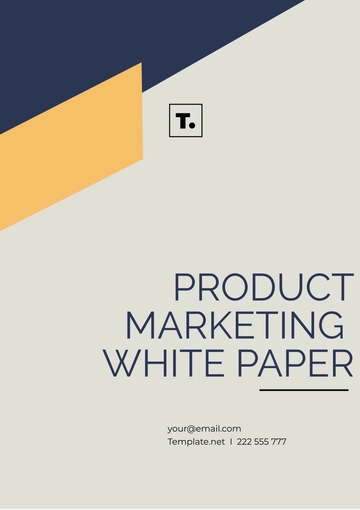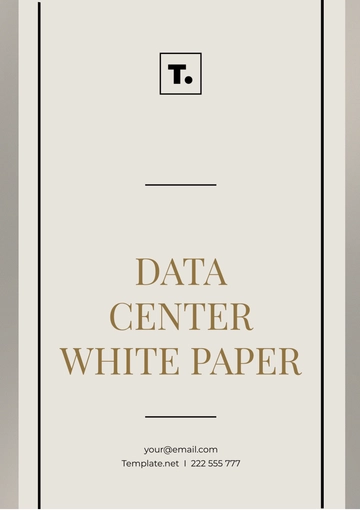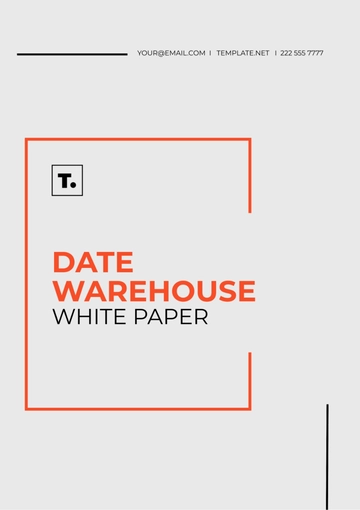Free Product Design White Paper
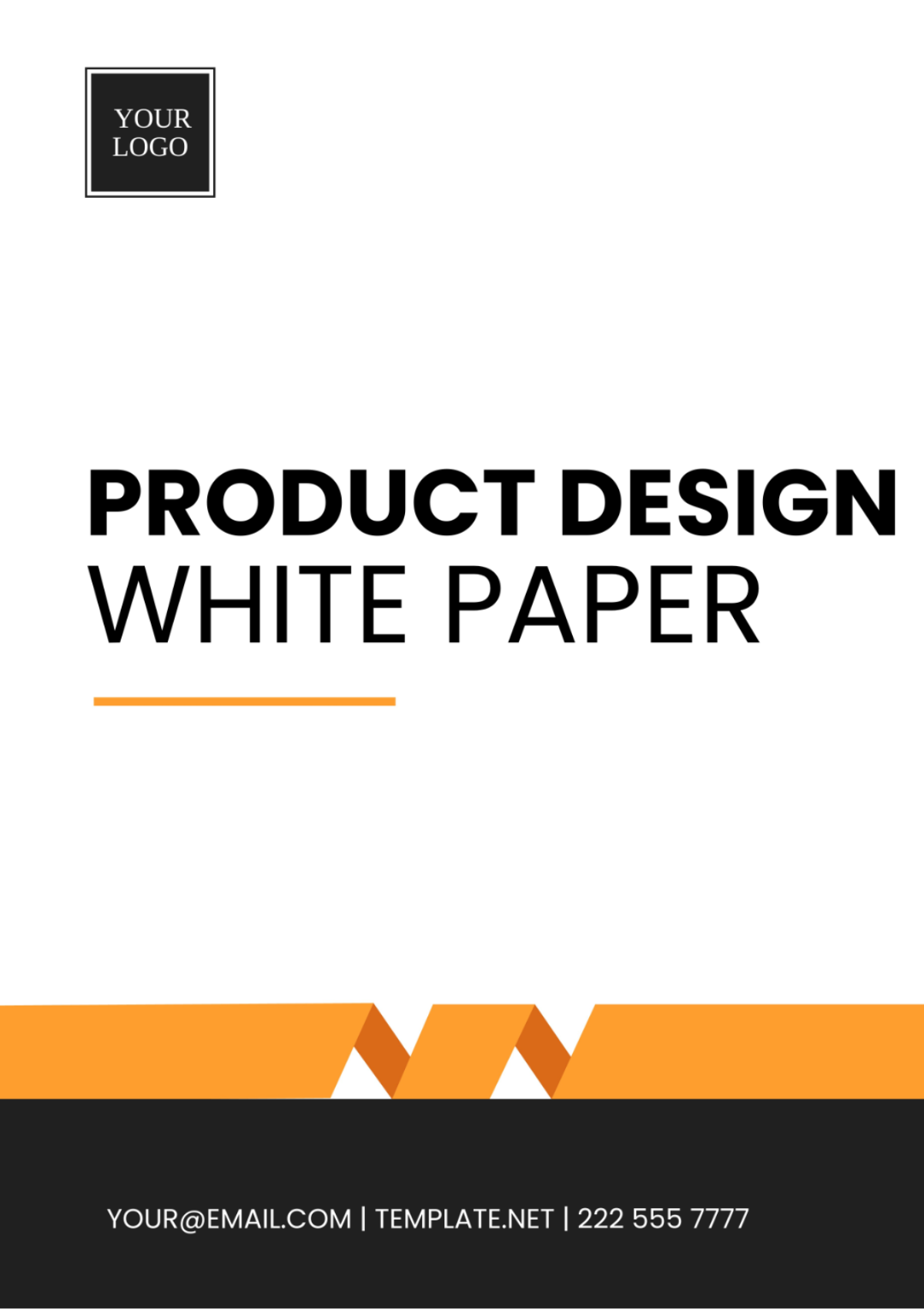
Enhancing Product Design: A Blueprint for Innovation and User-Centricity
Prepared by: [Your Name]
Company: [Your Company Name]
Department: [Your Department]
Date: [Date]

I. Executive Summary
In today's competitive landscape, effective product design is paramount to [Your Company Name]'s success. This white paper outlines the company's approach to product design, emphasizing user-centricity, innovation, and iterative development. By prioritizing user needs and market insights, [Your Company Name] aims to deliver products that resonate with the target audience and drive business growth.
II. Introduction
The introduction emphasizes the importance of exceptional product design beyond aesthetics. [Your Company Name] acknowledges that solving user problems and creating meaningful experiences are central to successful product design. By integrating design thinking principles into the product development process, [Your Company Name] aims to deliver solutions that delight customers and differentiate the company in the market.
III. Understanding User Needs
A. Market Analysis
Recent market analysis conducted by [Your Company Name] and its design team revealed a growing demand for smart home automation devices among tech-savvy millennials aged 25-40. Key insights include a 30% year-over-year increase in online searches for smart thermostats, smart lighting, and smart security systems. Additionally, survey responses indicated that 70% of respondents expressed interest in purchasing smart home devices within the next 12 months. This data informs product design decisions and ensures alignment with market demands.
Figure 1: This line chart illustrates the year-over-year increase in online searches for smart thermostats, showing a steady growth trend over the past three years.
B. User Persona Development
Through interviews, surveys, and behavioral analysis, [Your Company Name] and its design team developed comprehensive user personas representing the diverse customer base. These personas, such as "Tech-Savvy Tina" and "Eco-Friendly Ethan," help [Your Company Name] empathize with users and tailor design solutions to their specific needs.
IV. Ideation and Concept Development
A. Brainstorming Sessions
Led by the design team, [Your Company Name] engages in regular brainstorming sessions to generate creative ideas and concepts. By fostering a culture of creativity and collaboration, the company aims to unlock new opportunities and push the boundaries of innovation in product design.
B. Concept Prototyping
Utilizing rapid prototyping tools and techniques, the team quickly transforms ideas into tangible prototypes for user testing. This agile approach allows [Your Company Name] to gather valuable feedback early in the design process and iterate rapidly to create products that meet user expectations.
V. Design Implementation and Testing
A. Iterative Design Process
Led by the design team, [Your Company Name] follows an iterative design process that prioritizes user feedback and data-driven decision-making. By embracing agility and flexibility, the company adapts to evolving user needs and market dynamics, ensuring products remain competitive and relevant.
B. Usability Testing
Through rigorous usability testing conducted with real users, [Your Company Name] identifies areas for improvement and refinement in product design. By analyzing user interactions and feedback, the company iteratively enhances usability, accessibility, and overall user satisfaction.
VI. Final Product Design
A. Design Validation
The culmination of the design team's efforts, the final product design reflects [Your Company Name]'s commitment to excellence and user-centricity. Through extensive validation and refinement, the company has created a product that not only meets but exceeds customer expectations, setting a new standard for innovation and quality.
B. Feature Prioritization
By collaborating closely with stakeholders and leveraging user feedback, [Your Company Name] prioritizes features that address the most critical user needs and deliver the greatest value. Through strategic feature prioritization, the company ensures products remain competitive, scalable, and aligned with strategic objectives.
VII. Conclusion
In conclusion, effective product design is a cornerstone of [Your Company Name]'s strategy for sustainable growth and innovation. By putting users at the center of the design process and embracing iterative development, the company continues to push the boundaries of possibility and deliver exceptional value to customers.
VIII. References
Norman, D. A. (2013). The design of everyday things. Basic Books.
Brown, T. (2009). Change by design: How design thinking transforms organizations and inspires innovation. HarperBusiness.
Nielsen, J., & Budiu, R. (2012). Mobile usability. New Riders.
IDEO. (2011). Human-centered design toolkit.
Cooper, A. (2004). The inmates are running the asylum: Why high tech products drive us crazy and how to restore the sanity. Sams Publishing.
International Organization for Standardization. (2010). Ergonomics of human-system interaction — Part 210: Human-centred design for interactive systems. Link
Nielsen, J. (1993). Usability engineering. Academic Press.
Buxton, B. (2007). Sketching user experiences: Getting the design right and the right design. Morgan Kaufmann.
- 100% Customizable, free editor
- Access 1 Million+ Templates, photo’s & graphics
- Download or share as a template
- Click and replace photos, graphics, text, backgrounds
- Resize, crop, AI write & more
- Access advanced editor
Discover the ultimate guide to exceptional product design with our Product Design White Paper Template, available exclusively on Template.net. This fully editable and customizable resource empowers you to craft innovative solutions tailored to your audience's needs. Editable in our Ai Editor Tool, it's your key to unlocking design excellence.



